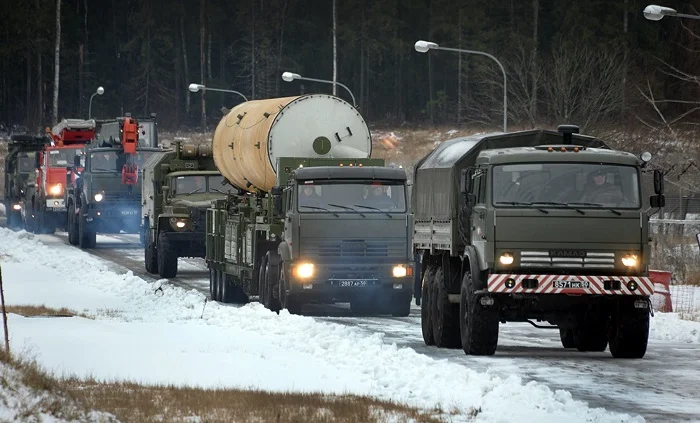Russia has announced the formation of a new anti-aircraft missile regiment in the Republic of Khakassia located in the southwestern part of Eastern Siberia – a region close to Mongolia which is not only rich in natural resources but also houses the country's largest hydropower plant.
"An anti-aircraft missile regiment armed with Pantsir-S anti-aircraft missile and gun systems will be formed in the Republic of Khakassia in 2022. The personnel of the military unit will be on alert for the air defence of the region," the Russian Ministry of Defence announced on Tuesday.
The Pantsir-S anti-aircraft missile and cannon system is designed for air defence of small military and administrative-industrial facilities, areas from aircraft, helicopters, cruise missiles and precision weapons. It is also deployed for strengthening the air defence groups in repelling massive air strikes.

The S-400 'Triumph' air defence missile system
The complex armament, detailed the Press Service of Russia's Central Military District, includes two 30-mm 2A38M double-barreled anti-aircraft guns (range and height of destruction of an air target – 4 and 3 km, respectively), as well as 12 ready-to-launch anti-aircraft guided missiles (range and height of destruction of an air target – 20 and 15 km, respectively)
The latest development follows the Russian military's long-term plan of strengthening its combat positions in new areas of its vast territory, from Siberia to the Volga region and in the Urals.
Last July, the crews of the S-300 Favorit and S-400 Triumph anti-aircraft missile systems (SAM) of the air defence (PVO) formations had held large-scale drills in seven regions, including Khakassia, Samara, Saratov, Sverdlovsk, Novosibirsk, Irkutsk and Krasnoyarsk.
Also Read: After S-400 missiles and AK-203 rifles, Russia offers India its cutting-edge Armata tank technology
Marching to "new positional combat alert areas", over 1000 servicemen, using more than 300 units of equipment, worked out the protection of administrative facilities and territories from the air attack of a conventional enemy during the course of combat training.
Securing Russia's rich resources
Moscow's renewed focus on Khakassia stems from realising Russian President Vladimir Putin's dream of developing different regions of the country, including the Far East. Keeping secure many of its key projects in the region where countries like India too have made a significant investment – the Sakhalin's oil fields being an example – has now become a top priority for the Russian defence forces.
Located in the southwestern part of Eastern Siberia in the left-bank part of the Yenisei River basin, Khakassia has deposits of ferrous and non-ferrous materials such as iron ores and flux, copper, molybdenum, zinc, lead, as well as precious and rare metals.
There are proven reserves of oil and gas as well as large accumulation of fossil fuels, building and chemical materials, which provide the foundation for the development of the mining industry in the future.

Russian Defence Minister Sergei Shoigu visiting Khakassia and Tuva
More importantly, Khakassia's energy complex includes Russia's largest and most powerful hydro power plant, the Sayano-Shushenskaya, which ranks 6th in the world in terms of capacity.
There are also the Mainskaya Hydro Power plant, and the Abakanskaya, Abazinskaya and Sorskaya thermal power plants.
Having 320 rivers as well as 22 natural and artificial lakes, it is believed that there are also between 30 to 32 thousand "above-ground" archaeological monuments in Khakassia.
Also Read: Ahead of his visit, Putin praises India as one of the hubs of a multipolar world




















